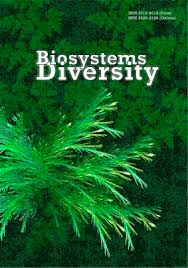Influence of lead salts on some morphological and physiological parameters of filamentous cyanobacteria
Influence of lead salts on some morphological and physiological parameters of filamentous cyanobacteria
Author(s): A.R. Galperina, O.B. SoprunovaSubject(s): Evaluation research, Human Ecology, Environmental interactions
Published by: Дніпропетровський національний університет імені Олеся Гончара
Keywords: heavy metals; cyanobacteria; lead; photosynthetic pigments;
Summary/Abstract: In the conditions of a model laboratory experiment the influence of lead salts (an acetate and nitrate) on morphological and physiological parameters of filamentous cyanobacteria was studied. During the experiment we estimated features of formation of biomass, structure of trichomes, form and the size of cells, content of chlorophyll a, carotenoids and phycobiliproteins. It is noted that in the presence of lead acetate of up to 5 maximum allowable concentrations there is a formation of a biomass in the form of attached and free films, and presence of a nitrate form of lead at the same concentration promotes formation of filaments, fixed from one side. At the same time, the increase of concentration of both acetate, and nitrate forms of lead promotes formation of rarefied films of one layer multidirectional trichomes; to disintegration of trichomes on the fragments and separate cells united by an external mucilaginous envelope. Content of lead acetate in concentration of 15 times the maximum allowable concentration, and lead nitrate at 10 times the maximum allowable concentration leads to formation of abnormally long cells up to 10.0–10.5 μm long. It is established that lead acetate has a stimulating effect on formation of a biomass and synthesis of photosynthetic pigments. The biomass growth of up to 223.7% of the control was observed at concentration up to 15 times the maximum allowable concentration inclusive. The content of chlorophyll a grew by 30.6%, carotenoids – by 24.0% at one maximum allowable concentration. Lead nitrate stimulates a biomass gain much more weakly – up to 70.0% at 5 times the maximum allowable concentration and also has the expressed inhibiting effect on synthesis of photosynthetic pigments.
Journal: Biosystems Diversity
- Issue Year: 26/2018
- Issue No: 3
- Page Range: 227-232
- Page Count: 6
- Language: English

